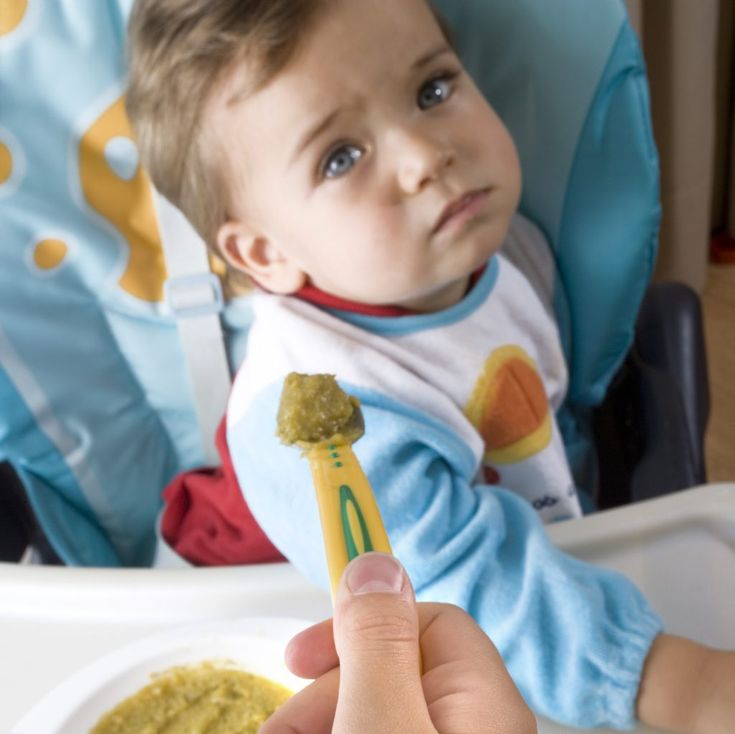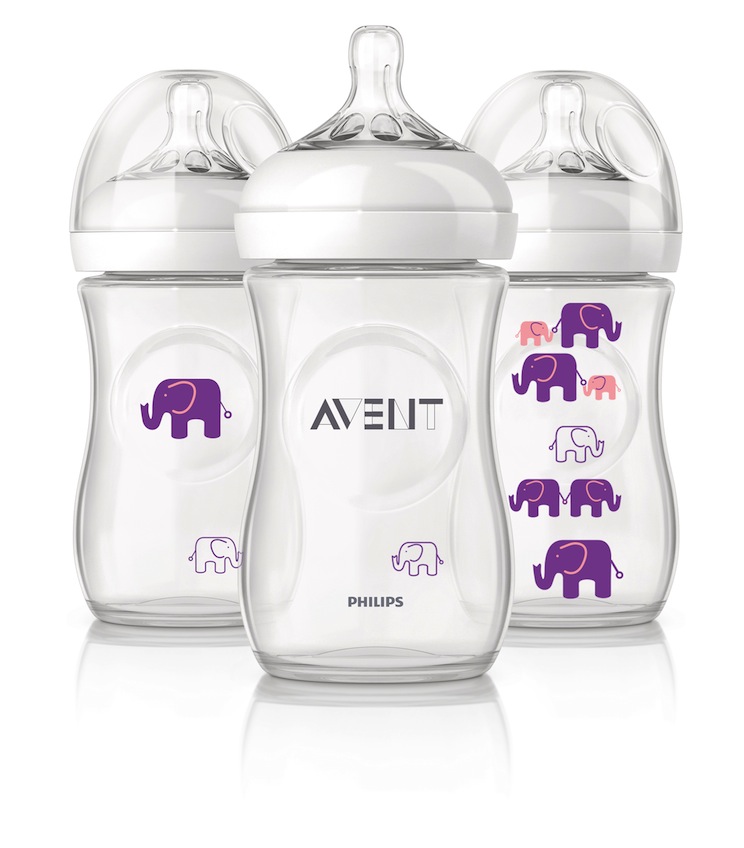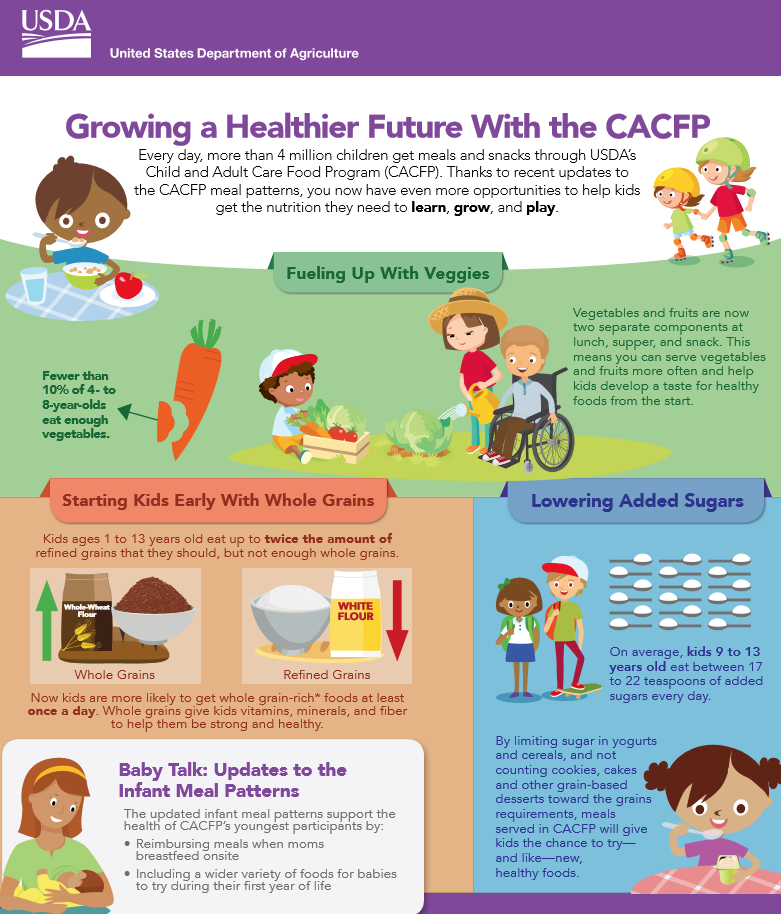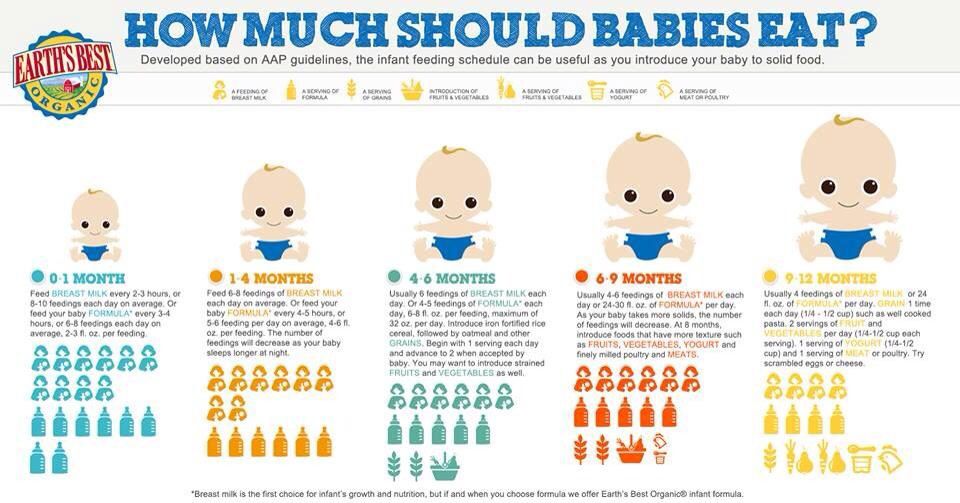How do mother snakes feed their babies
How Do Snakes Feed Their Young And Do They Produce Milk?
Have you ever wondered how snakes feed their babies?
What kind of parenting skills do snakes have, anyway?
Every animal reproduces.
Creating and raising the next generation is a vital part of life.
Every animal must take care of its young in its own way.
A dolphin will nurse her calf; a human mother will nurse her baby.
But how do snakes nurse their young?
Snakes do not nurse their young. Instead, newborn snakes receive nutrients from their egg or sac yolk and quickly become self-sufficient once born.
Table of Contents
Why Don’t Snakes Nurse Their Young?
When a mother nurses her baby, she uses milk she internally produces.
This process is called lactation.
However, snakes, like all reptiles, do not lactate.
They do not possess mammary glands, which are essential for producing milk.
Lactating is an ability belonging only to mammals.
Other classes of animals, like fish, also do not nurse their young.
Non-lactating animals have different ways of feeding and caring for their babies.
How Do Snakes Feed Their Young?
If snakes don’t nurse their babies, how do they feed them?
The answer may surprise you – they don’t!
Snakelets are born fully mature and developed.
After a brief waiting period, they will be ready to fend for themselves.
Until they’re ready to hunt, the babies live off the nutrients existing in their bodies before they were born.
Baby snakes typically experience their first shed a week after birth.
Then, they’re ready to venture out on their own into the world!
What Do Baby Snakes Eat?
Since snakelets are fully developed, they have the same diet as their adult counterparts.
The only difference is the size of the food they can swallow.
Each snake has a different diet, but every snake is carnivorous.
Babies will find smaller prey like newborn mice, bugs, or tiny frogs.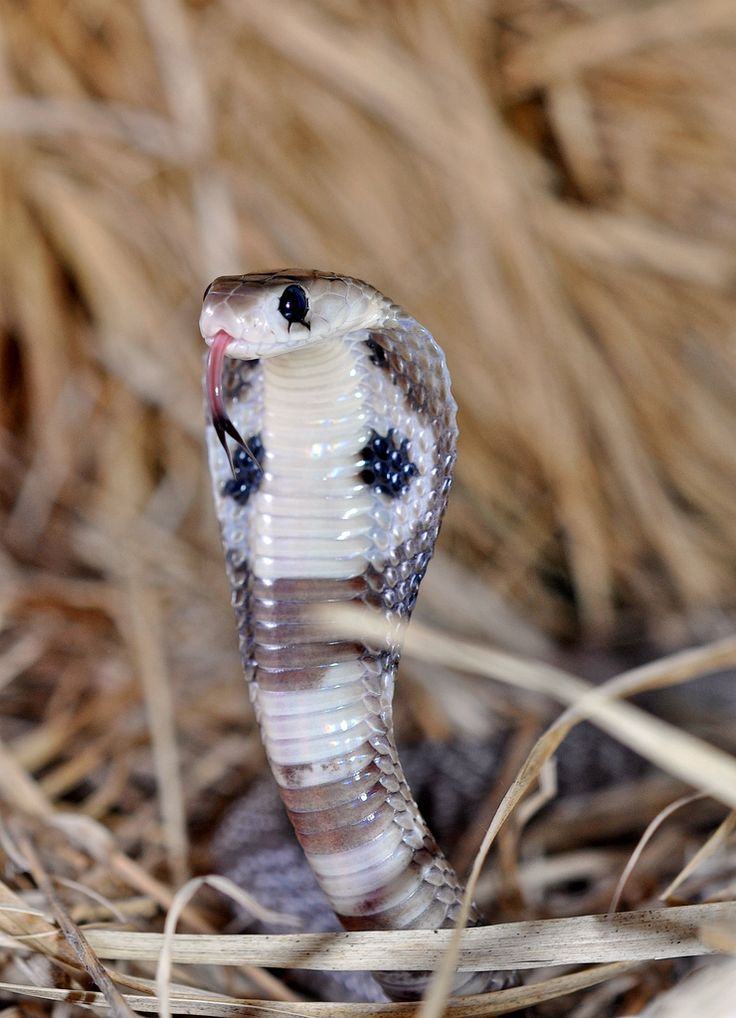
Snakes Are Born in Different Ways
There are a lot of differences in how snakes are born and how they care for their babies.
It entirely depends on the variety of the snake.
Around 70 percent of snakes are egg-producing.
Scientists use the term oviparous to refer to egg-laying snakes.
The remaining 30 percent give birth to live young.
The term for this is viviparous.
Some snakes do a combination of both – mothers will hold eggs inside them until they’re ready to hatch.
The babies will hatch inside the mother and will be live-birthed.
This is known as ovoviviparity (“partial live birth”).
Some snakes don’t parent their babies at all.
Others tend to their eggs until they hatch, then they leave the snakelets to fend for themselves.
And still, others watch over their young until it’s time for them to leave the burrow.
Oviparous Snakes (Born From Eggs)
Babies get their first nutrition from the yolk inside their eggs.
As a snake embryo develops, it will consume the yolk.
It will also receive some outside moisture and oxygen permeating through the eggshell.
Egg-laying snakes usually don’t care for their babies at all!
Mothers will deposit their clutch of eggs in a safe place, then leave them there.
An ideal place to deposit eggs is warm, dark, and damp from surrounding vegetation.
The babies will hatch and need to fend for themselves instantly.
There are exceptions to this rule.
Cobras and python mothers will watch over their eggs and their hatchlings until the babies are ready to leave the burrow.
This process of parenting is exhausting for an African python mother.
From the time she is initially pregnant to when her babies leave home, she won’t hunt or eat anything.
She could lose up to 40 percent of her body weight!
She even turns black (African pythons are typically brown) to absorb more heat to warm her eggs.
The African python mother will coil around her eggs.
Once the babies hatch, they will aggregate with their mother, meaning they will all cuddle together to keep warm.
Viviparous Snakes (Live-Birthed)
Viviparity (giving live birth) is the rarest form of reproduction in snakes.
Only a few snake varieties, like boas and water snakes, give live birth.
This means babies develop in a placenta and a yolk sac similar to mammals.
Unborn snakes receive sustenance from the nutrients in their amniotic sac.
Once born, these nutrients will tide the snakelets over until their first shed, when they begin hunting.
Check out our list of 11 snakes that have live babies for some cool facts and pictures.
Ovoviviparous Snakes (Partially Live-Birthed)
Ovoviviparity (giving partial live birth) is much more common in snakes.
It is a combination of laying eggs and giving live birth.
Because the process is similar to viviparity, scientists sometimes debate whether it should be considered a separate category.
Rattlesnakes and garter snakes are a few examples of ovoviviparous snakes.
Mothers will retain their clutches of eggs inside their bodies, hosting the young snakes until they’re ready to be born.
Ovoviviparous babies develop in a soft and permeable eggshell.
They get nourished from the egg yolk, and nutrition and oxygen pass from mother to child through the thin egg membrane.
When the babies are ready to be born, they hatch inside the mother; then, they give birth to live young.
Why Some Snakes Give Live Birth
There are many good reasons why certain snakes evolved into live-birthing animals.
- Protecting unhatched eggs from predators: it’s dangerous to leave defenseless unborn babies unattended.
- Protecting the mother from predators: a mother is at risk when she is pregnant and weaker from not eating.
- Environmental influences: tree snakes rarely come down from their perches; water snakes rarely come to shore.
A lot of venomous snakes give live birth.
Scientists think it’s because the babies are much safer inside a venomous mother than being left defenseless inside their unhatched eggs.
Staying inside their mother until fully developed gives them a much better chance of survival.
How Rattlesnakes Care for Their Young
Rattlesnakes have a few unique qualities.
Some of their parenting techniques are different from many other live-birthing snakes.
Most viviparous snakes will leave their babies to fend for themselves right after birth.
But rattlesnakes keep their newborn snakelets close to home.
Rattlesnake babies are thought to have a predator-attracting odor.
Their mothers will guard the babies in their den.
Like African pythons, some rattlesnake mothers change to darker skin color to retain more heat and keep their babies warm.
They will aggregate in their den with their young.
If their babies start to stray too far from home, mothers will warn them with a tapping motion.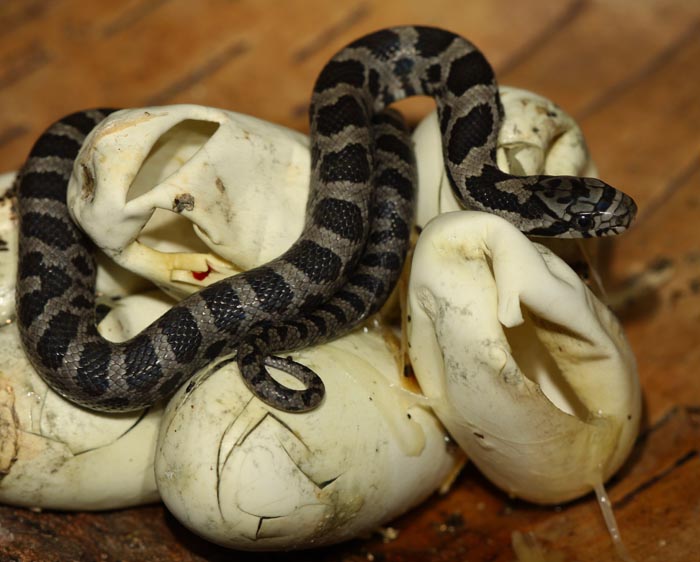
Once rattlesnake babies shed for the first time, they too are ready to leave the den and journey into the world.
Conclusion
Now we know how snakes nurse their young; they don’t!
They have different methods to give their babies nourishment.
Baby snakes rely on the yolks inside their eggs or placentas, which they eat as they develop into fully mature newborn snakes.
Baby snakes eat the same carnivorous diet as their parents, just in smaller portions.
Some snake mothers will deposit their eggs and leave them to hatch later.
Others will guard their eggs and keep them warm until they hatch but won’t care for their snakelets at all.
Others will guard their newborn babies until the snakelets can hunt.
Regardless of individual parenting styles, baby snakes are born into this world fully mature and ready to get their lives started!
Do Rattlesnakes Nurse Their Young? (Answer)
Do rattlesnakes nurse their young?
The answer is NO. Rattlesnakes do not nurse their young. Snakes are reptiles, and reptiles do not lactate.
Rattlesnakes do not nurse their young. Snakes are reptiles, and reptiles do not lactate.
Lactation, or producing milk for young animals to feed, is a unique mammal trait. Snakes are not mammals!
Read on for more details about baby rattlesnakes and feeding practices.
Quick Navigation
Why Can’t Rattlesnakes Nurse Their Young?
This is a common misconception, and it is unclear where this idea arose from.
Mammals nurse their young using the mammary glands that females are born with. These glands produce milk for young animals to nurse, for days, weeks, or months after the animals are born.
This prevents them from needing the ability to hunt or feed on their own, which most animals will not develop until they are older.
However, snakes are reptiles, and no reptiles have mammary glands! They are not born with the ability to lactate and produce milk, so they (and all other non-mammal animals) must provide food for their young another way.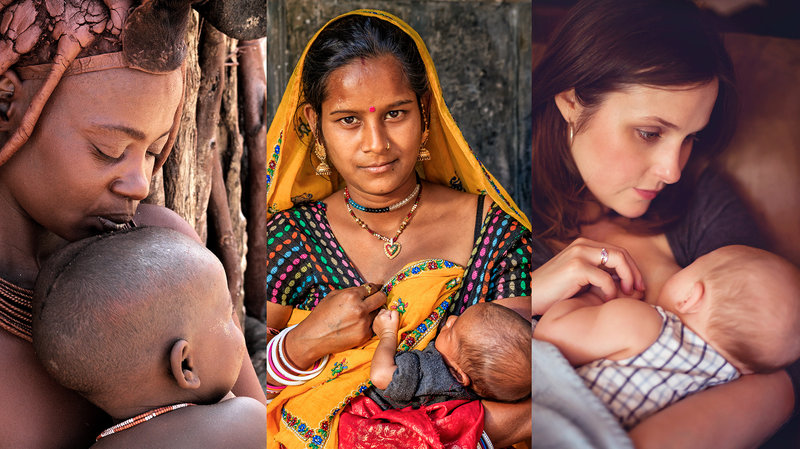 But how?
But how?
About Rattlesnakes
Here is some additional info on young rattlesnakes:
How Are Baby Rattlesnakes Born?
Rattlesnakes, like some other snakes, go through a birthing process known as ovoviviparity. Rattlesnake mothers form the babies inside their bodies and keep them there as embryos in “sacks”, like eggs without hard shells. Within the egg sacks, the babies have all of the nutrients they need to grow and develop until they are mature and ready to be born. They incubate within their mother’s bodies until they are born, and then once they are born live they break open the thin membrane of the sack.
Are Baby Rattlesnakes Born with Rattles?
Baby rattlesnakes shed their first skins around one week after birth. With the first shed, a small segment of skin (called a button) is added to the base of their tail, and with each shed this segment is added to, creating a rattle! With each shed, the snake (and the rattle) continue to grow, and even after the snake reaches adulthood, it will continue to grow in length until it dies.
It is not possible to tell how old a rattlesnake is by counting its rattles, because every time the snake sheds a new segment is added, and they can shed between 1-4 times per year, so this is not an exact record of age.
Baby rattlesnakes cannot rattle to warn others of their presence, because if they only have one or two segments, there is not enough to rattle and produce any sound! This means that you may not be warned of a baby rattlesnake’s presence like you would an adult.
How Do Baby Rattlesnakes Eat?
While still inside their mother, baby rattlesnakes survive solely on the “yolk” of their egg sacks. These nutrients are enough to sustain them for a short time after they are born. Once the babies are born, they are already mature, and after their first shed they are already able to hunt and eat on their own!
Once they are old enough to hunt, they eat the same prey as their adult counterparts: mice, rats, small rodents, and birds. Rattlesnakes are carnivores and once they have had their first shed, they are able to prey on animals by striking and unleashing their venom, and then swallowing the prey whole. They are able to digest bone, muscle, and fur using their strong stomach acid.
They are able to digest bone, muscle, and fur using their strong stomach acid.
How Do Rattlesnakes Take Care of their Babies?
Mother rattlesnakes have several babies per clutch, usually 8-10 at once. They are usually 10 inches long when they are born, and are already able to do most of the things that adult rattlesnakes can, besides hunt.
Reptile mothers are generally very protective of their young, and take very good care of them. When the babies emerge from their egg sacks, the mother snake will protect and guard them, keeping them warm and out of danger. The first week of their life is spent in close proximity with the mother and their siblings, and after this first week the snakes will shed for the first time. At this point they are old enough to go hunting alone.
During this first week, mother rattlesnakes will allow their babies to leave the den and explore, but will tap or nudge them if they stray too far.
Rattlesnake Family Structure
Rattlesnakes come out of brunation (similar to hibernation) in late spring to early summer. Depending on the species of rattlesnake and their geographic location, they will either mate when they first emerge in early summer, or at the end of the summer before entering into brunation again.
Depending on the species of rattlesnake and their geographic location, they will either mate when they first emerge in early summer, or at the end of the summer before entering into brunation again.
Rattlesnakes are generally isolated individuals, with the males only interacting with females during mating. Females will give birth, watch over the babies for one to two weeks, and then leave. For the most part, rattlesnakes live and hunt alone.
Where do Rattlesnakes Live?
There are 32 species of rattlesnakes that specifically live in the Americas, and are concentrated in the American Southwest and Mexico. They can be found in environments as varied as marshes, mountains, prairies, deserts, and forests.
Snakes aren’t able to dig in the way that mammals can, or create their own burrows, so they typically reuse holes from rodents to make their dens. They seek out dens that are in direct sunlight and are preferably sheltered by rocks or wood for protection.
Do Rattlesnakes Hibernate?
Rattlesnakes brunate in the winter, meaning they enter a less active state in order to conserve energy while they survive through the cold winter months. Because snakes are cold blooded, they cannot stand winter temperatures as well as mammals. For this reason, they stay in their dens with other rattlesnakes and their young to stay safe and secure through the long winter.
Because snakes are cold blooded, they cannot stand winter temperatures as well as mammals. For this reason, they stay in their dens with other rattlesnakes and their young to stay safe and secure through the long winter.
Why do Rattlesnakes have Unique Patterning?
Rattlesnakes have patterns that make them blend in with their surroundings. They have dark and light scales that imitate the appearance of the shadows and light spots of their natural environment. At birth, baby rattlesnakes have these patterns already, and these patterns grow with their bodies and persist through life. The patterning of rattlesnake skin is unique and helps other snakes of the same species identify mates and family members.
As babies, they do not have as much venom as adult rattlesnakes, and they are very vulnerable to predators. By having their patterning from a very young age, they are protected from rodents, other snakes, and other predators that might prey on a young snake. By simply curling into a ball or stretching out in the shadows, their unique patterning helps them blend in with rocks and sticks, avoiding predation.
Is Rattlesnake Venom Deadly?
Rattlesnake venom is produced within the venom gland of the snake, which sits above the fang. Venom is released when the snake bites its prey. The venom drips from the fangs and enters the bloodstream of its victim. Rattlesnakes are front-fanged snakes, meaning that their venom-secreting fangs are in the front of their mouths and they fold back into their mouths when closing them. This is much different from a rear-fanged snake, which has to chew on its prey with its back fangs in order to release venom.
Front-fanged snakes are much more dangerous than rear-fanged, because they can release venom directly into the bloodstream of the victim. Their venom is generally more toxic as well.
Rattlesnake venom for most species contains hemotoxins, which cause tissue and muscle damage, internal bleeding, and extreme pain. Most creatures cannot fight off the effects of the hemotoxins because they do not produce enough antibodies. However, humans can survive rattlesnake bites as long as they seek immediate medical treatment, usually including antivenom.
Neurotoxins are a more serious concern for bite victims, but not all rattlesnake species have neurotoxins in their venom. Those that do can cause breathing and swallowing difficulty, muscle weakness, and vision problems from a bite. Still, bites even from rattlesnake species that produce neurotoxins are not usually fatal if treated rapidly.
Is a Bite from a Baby Rattlesnake More Dangerous than a Bite from an Adult?
Baby rattlesnakes are NOT more dangerous than adults. Contrary to popular belief, a bite from a baby rattlesnake is not as dangerous as one from an adult rattlesnake. Baby rattlesnake venom is far more toxic than an adult’s, which is possibly how this myth arose. However, the adults have far more venom in their venom sacks. This means that even if a baby rattlesnake injected you will all of the venom it had, and despite the fact that it is more toxic, it would still not compare to the amount of venom that an adult snake would inject.
Imitation is the Best Form of Flattery
Some snakes have caught on to the fact that rattlesnakes are effective predators, and have developed the rattle as a way to warn off potential predators and threats.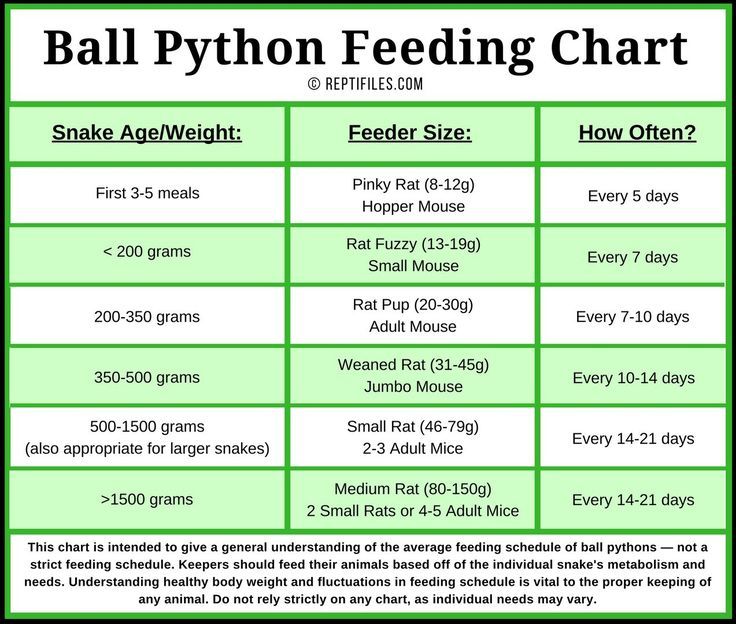 These other snakes have begun to mimic the sound and action of the rattlesnake’s rattle! Gopher snakes are able to coil up and either allow their scales to grind against each other or vibrate their tails on the ground to recreate the rattling sound. False water cobras will coil up to look like a rattlesnake and simply shake their tails back and forth in an attempt to trick potential predators.
These other snakes have begun to mimic the sound and action of the rattlesnake’s rattle! Gopher snakes are able to coil up and either allow their scales to grind against each other or vibrate their tails on the ground to recreate the rattling sound. False water cobras will coil up to look like a rattlesnake and simply shake their tails back and forth in an attempt to trick potential predators.
Frequently Asked Questions
Here are some more commonly asked questions about rattlesnakes:
How Big Can Rattlesnakes Grow on Average? What is the Biggest Rattlesnake Ever Recorded?
There are many species of rattlesnakes. The eastern diamondback is the largest venomous snake in North America, reaching up to 8 feet in length. The largest (longest) rattlesnake on record was actually a western diamondback, which was found within the United States and was 8.5 feet in length.
How Can I Identify a Rattlesnake in the Wild?
Rattlesnakes are actually a type of pit viper, with triangular shaped heads, slender necks, and elliptical eyes with pupils that are shaped like slits. If you have a chance to look under their tail, you’ll find a single row of scales, as opposed to most snakes which have a double row of scales. And of course, they have the distinctive rattle on the end of their tail!
If you have a chance to look under their tail, you’ll find a single row of scales, as opposed to most snakes which have a double row of scales. And of course, they have the distinctive rattle on the end of their tail!
How Do Rattlesnakes Locate Their Prey?
Rattlesnakes have thermal receptors that allow them to detect warm-blooded creatures nearby. Like other types of snakes, they can also scent the air around them using their tongue. Finally, they can sense vibrations in the ground, and use all three of these techniques to zero in on their dinner.
Can Rattlesnakes Swim?
Most people think that rattlesnakes can only thrive in the desert, but they are found in a variety of natural habitats, from fields to marshes to forests. Rattlesnakes are very happy in moist environments and they are strong swimmers!
Do Rattlesnakes Freeze in the Winter?
Unlike some reptiles and amphibians, rattlesnakes do not freeze in the winter, though they do go into a state of brunation.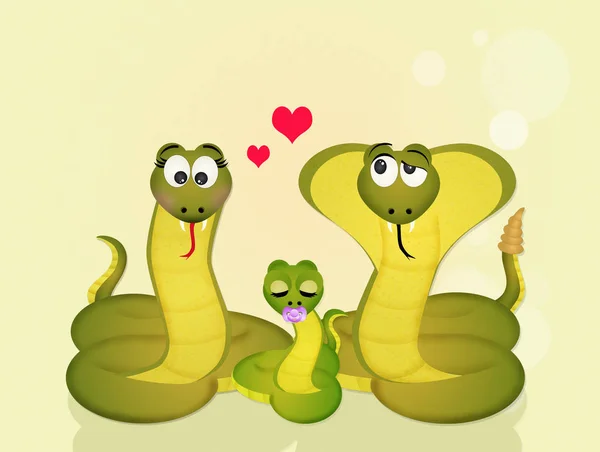 They are not very tolerant of temperatures below 65°F when active, but during brunation in dens they can stay out of the worst of winter weather.
They are not very tolerant of temperatures below 65°F when active, but during brunation in dens they can stay out of the worst of winter weather.
How Can I Avoid Crossing the Path of a Rattlesnake?
Rattlesnakes, like most wild snakes, are active during the early morning in spring as well as all throughout hot summer days. They sleep at night, usually in dens or coiled beneath rocks and brush. To stay out of their way, try to stay out of underbrush and on trails. Keep your eyes and ears open, and stick together with other people so someone can go for help if needed. Wear high boots, long pants, and maybe even snake gaitors, depending on your location. Hiking during brunation season is another way to avoid snakes, as very few if any will be active between late fall-early spring.
What Are the Natural Predators of Rattlesnakes?
What would want to eat a rattlesnake? As it turns out, rattlesnakes are preyed upon by many animals, including many birds of prey (eagles, hawks, falcons), coyotes, badgers, and other snakes to include kingsnakes and indigo snakes.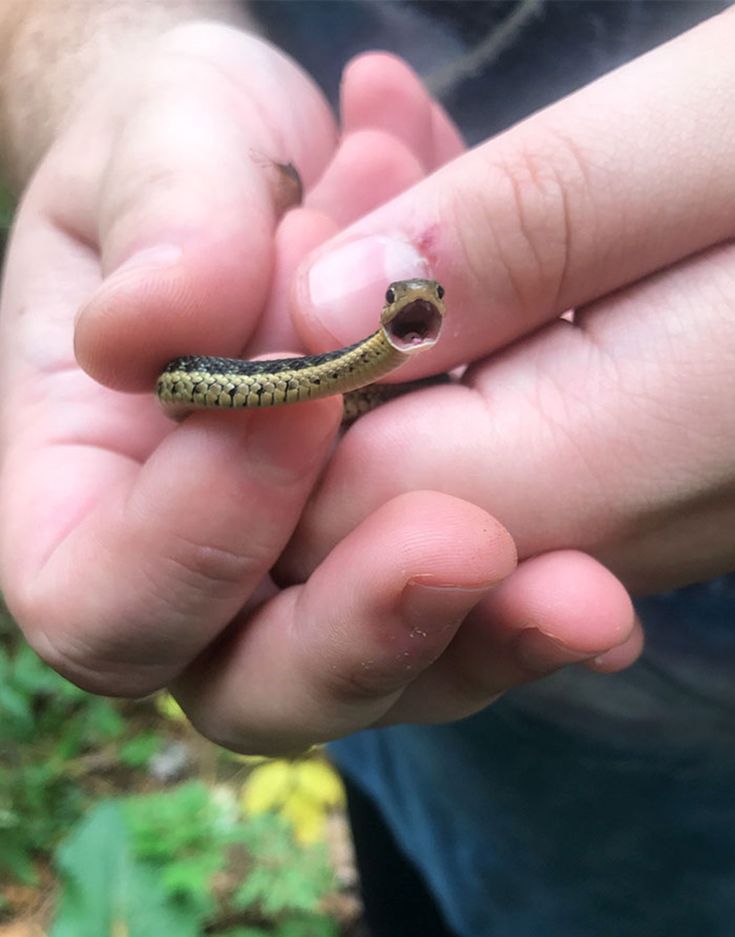 Some rodents such as woodrats have been known to kill rattlesnakes in self-defense if they had been attacked by the snake first.
Some rodents such as woodrats have been known to kill rattlesnakes in self-defense if they had been attacked by the snake first.
How do snakes take care of their young?
You should also line the bottom of the aquarium with aspen shavings, put in a bowl of water, some shelters and ornamental plants. To feed your baby corn snake, give him 1 dead mouse per week. Do not touch the snake for 2-3 days after feeding, so that it has time to digest it.
Although this seems short, we must keep in mind that a significant proportion of reptiles, and especially snakes, do not care for their young. These animals are born capable of eating on their own, and quite often they don't even know their mother, as is the case with some sea turtles.
How many types of snakes are there?
The group of species that is part of the suborder of snakes, that is, the group of snakes, is really diverse, numbering almost 3,000 different species.
How do snakes breed?
This may vary by species, but this behavior is usually part of the snake's breeding process.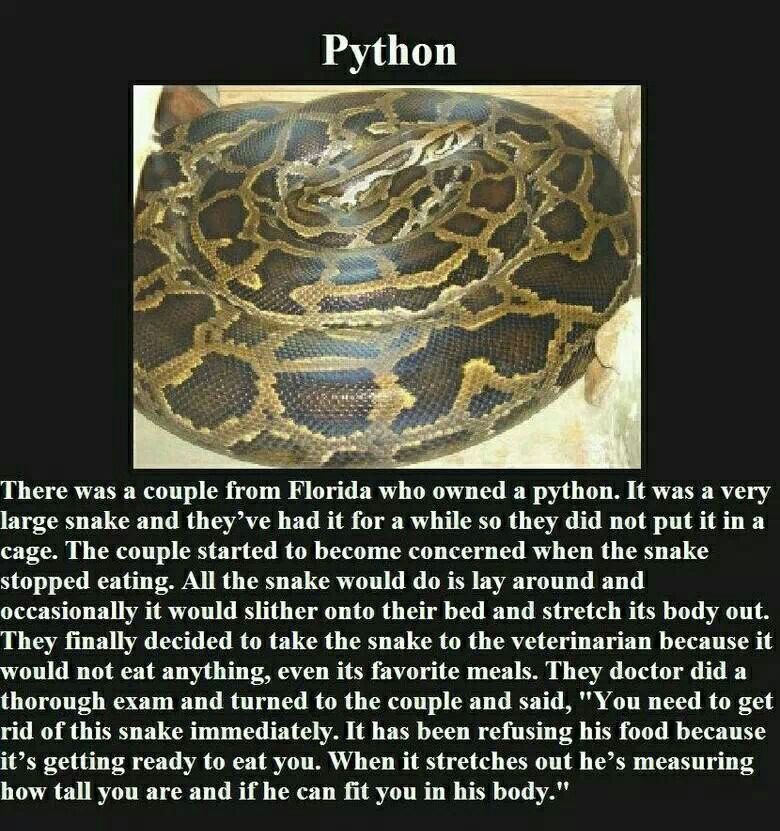 After breeding, the male and female separate. The female can become very hostile if mating has ended and the male is still present.
After breeding, the male and female separate. The female can become very hostile if mating has ended and the male is still present.
How to catch a snake?
The snake will always be carnivorous, feeding on other animals. Their prey can be up to three times their own size. The method of hunting their prey depends on each species, there are two types of snakes depending on their method of hunting: Boas: they kill their prey by surrounding it and suffocating it with their deadly embrace.
What kind of snake is born when they hatch?
When they appear, delivery occurs, in which the cubs are born already practically developed. Between both cases, oviparous and viviparous, we find certain kinds of snakes which are ovoviviparous. This type of birth is common in marine animals such as sharks.
How do snakes have babies?
70% of snakes breed and lay eggs, while others give birth directly. This is why we can tell snakes apart by the way they conceive their young.
This is why we can tell snakes apart by the way they conceive their young.
What to feed a baby snake?
Food: Feed once a week on live or dead mice. When young, they eat newborn mice, and as they grow, their prey size increases until it reaches one adult mouse per week.
How do snakes make love?
As you know, snakes only need to attach themselves to cloacae, the outer cavities that serve as both the reproductive and urinary systems. The male then expands one of his hemipenis, his sex organs, into the female's cloaca, where he deposits sperm.
How long does a snake's pregnancy last?
This species is ovoviviparous (the eggs are incubated inside and the young are born directly from the mother), the average gestation of the mother is about 170 days, and in the litter from 8 to 9cubs ranging in size from 25 to 30 centimeters.
How do snakes get pregnant?
All snakes use internal fertilization by copulation and most of them are oviparous. After fertilization, eggs develop, which the females lay in safe places such as burrows and nests.
How many eggs does a snake lay?
How many eggs does a snake lay? The number of eggs laid by a snake depends on the species, as some, such as rattlesnakes, lay 4 to 25 eggs, while others lay 3-4, and some snakes can lay 100 eggs.
What do snakes eat for children?
Snakes feed mainly on rodents, birds, fish, lizards... Some have evolved to hunt and prey on other snakes, this characteristic is called ophiophagy.
What do small water snakes eat?
This snake is able to stay underwater for 15 or even 20 minutes. There he catches most of his food, consisting mainly of tadpoles, newts, small fish, frogs and toads, earthworms supplement the diet.
What to feed a small boa constrictor?
The diet of boas is very diverse.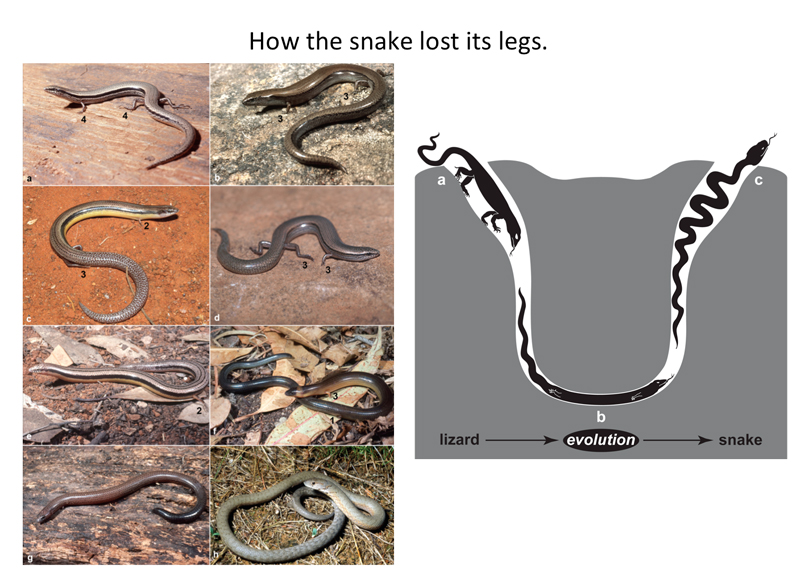 Young snakes eat mice, small birds, lizards and frogs. As it grows, it increases the size of its prey.
Young snakes eat mice, small birds, lizards and frogs. As it grows, it increases the size of its prey.
What attracts snakes?
Snakes usually have general rules of behavior, although their habits may vary depending on the species. In general, they all like to be hidden, and plants, pots or trees in the garden are a good place for them. Sometimes they also camouflage themselves in the grass if it is very tall.
What is a male snake?
sex determination methods
This system is based on consideration of the differences that at first glance exist between the sexes. Males have the widest tail just after the cloaca, and it is also flatter than females. In addition, females are larger than males, especially with a larger diameter.
What does a snake mean in a woman?
In both cases the woman is closely connected with the serpent. In the myth of the tenochka, the snake woman, also called Cihuacoatl, allows us to recreate a number of signs of otherness in our culture: touch, surface, desire, seduction, creeping instinct, skin change, and forked tongue.
What smell repels snakes?
Distribution of ammonia or sulfur: In some cases, the use of certain chemicals such as sulfur or ammonia is recommended to deter this type of animal, but since they are harmful, it is preferable to distribute these substances throughout the house and not directly to this animal.
How many eggs does a rattlesnake lay?
How many babies can a snake give birth to? There is no well-defined maximum number. Depending on the species, they can incubate from 2 to over 100 eggs and therefore young.
What if a snake sees a pregnant woman?
As a clarification, for those who believe in these myths, I will tell you that the answer is that this is a lie, because they (snakes) do not distinguish whether they are pregnant or not, and they do not seek to bite, they only attack if they feel threatened.
How do snake eggs hatch?
While some species of snakes lay eggs, baby rattlesnakes are born alive. The rattlesnake has eggs, but the eggs are inside the body of the female. The eggs hatch inside the rattlesnake's body, then it gives birth to its young.
The eggs hatch inside the rattlesnake's body, then it gives birth to its young.
Who are viviparous or viviparous snakes?
Although they are considered oviparous because most of them lay eggs, some species of snakes are viviparous and give birth to live young. This is because some climates are too cold for eggs to develop, so they do not lay eggs.
¿Cuáles son las características de la serpiente?
They are characterized by an elongated and cylindrical body; they have no limbs and a very flexible bony skeleton. Snakes (and all reptiles) are called "cold-blooded" animals because they are unable to regulate their body temperature on their own.
What is an oviparous or viviparous snake? Egg It consists of the yolk, protein, shells and shells.
How beavers take care of their cubs. Lifestyle in the wild. Plants, animals and their environment How do animals take care of their offspring? Female Langur monkeys kill their cubs if they are weak or sick.
I will also say about the lioness. She only cares about her daughters, not about her sons, and even if a lion tears apart a lion cub as a potential rival, she calmly looks at it.
Turtles take care of their offspring in the same way, they lay eggs and, having hatched, little turtles must survive on their own.
In the world of animals, caring for one's offspring is usually very touching, and rarely any animal is able to throw its cub to others, although this is also a kind of care for offspring. So does the Cuckoo, which throws eggs into other people's nests. Among birds, the cuckoo weaver and the black-headed tree duck have been observed in such behavior. Sometimes other birds also throw eggs.
Among mammals, I am not aware of such cases, although education can sometimes be quite harsh.
Naturally, reptiles and fish that lay eggs or lay eggs do not take care of their offspring.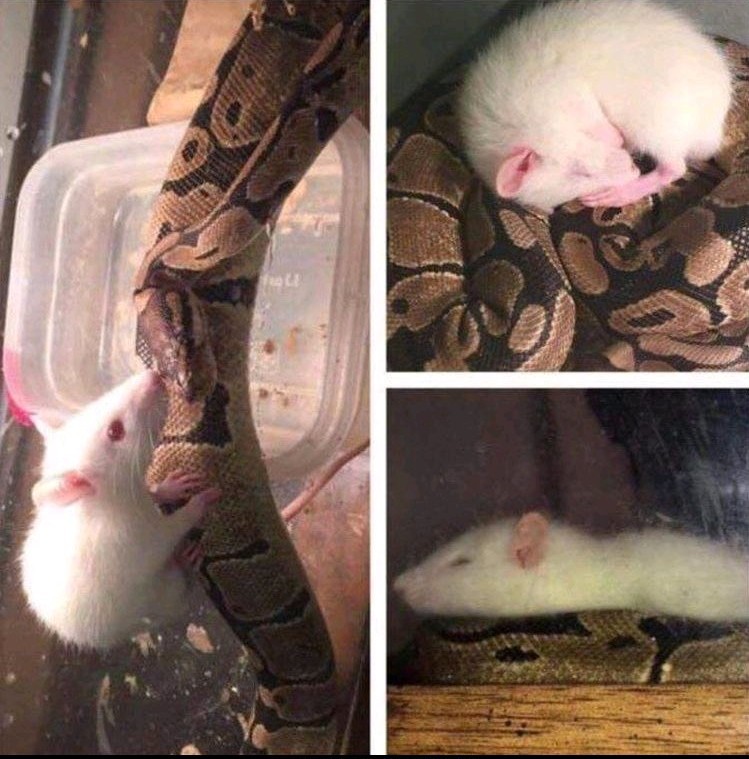
Among insects, it is also not customary to take care of offspring, although if a mother spider allows herself to be eaten by her spiderlings, is this not a concern?
There are few animals that do not take care of their offspring.
1) This is a familiar cuckoo that does not hatch its chicks, does not feed them, but lays its eggs to other birds.
2) This is a Galapagos Shark that gives birth to her sharks and then leaves them in shallow water so that they survive on their own, otherwise she might eat them.
3) Harp seal, here the female feeds her children and takes care of them for only two weeks, and then leaves them to survive, although they are still small.
First of all, these are many reptiles that lay eggs - turtles, crocodiles. almost all snakes.
Of the birds, this is a cuckoo - but still she thinks that her egg should be thrown into the nest, and not left anywhere, so there is some kind of concern. Bigfoot Birds or Weed Chickens - They bury their eggs in piles of dung, which burns and warms the eggs. Birds honeyguides - also do not bother to take care of their offspring.
Bigfoot Birds or Weed Chickens - They bury their eggs in piles of dung, which burns and warms the eggs. Birds honeyguides - also do not bother to take care of their offspring.
Turtles, snakes, lizards and finally the well-known cuckoo, which simply lays its eggs in other people's nests and forgets about them. And the new parents feed their children, as it were, without suspecting that these are not their chicks. To be honest, there are enough such cuckoos among people.
Animals mostly take care of their offspring, but there are also representatives among them who do not do this, giving the life of a small creature into the hands of Fate. There are not many such animals, the most famous was the cuckoo bird, which throws its egg into someone else's nest, shifting the responsibility for the growth of its chick onto the shoulders of another bird mother.
But besides the cuckoo, other parents behave badly towards children, see:
In this list:
African black eagle - she does not interfere in the fight of her chicks, in which only one chick remains;
Galapagos shark - gives birth to live sharks and pushes them into shallow water so as not to eat them right there;
Black bear , without hesitation, will leave a little bear cub if he was born alone, the she-bear only cares about the litter, in which there are several cubs;
Darwin's frogs as soon as the eggs are laid, they no longer approach either the clutch or the brood, shifting the care to dad;
Female langurs , fine-haired monkeys from the Monkey family, kill their own babies if they seem weak and unviable to them.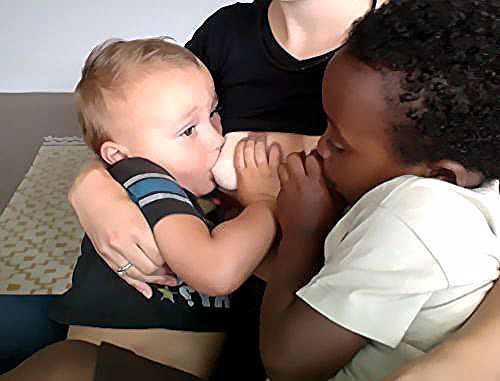
Also
Harp seals can be attributed to careless mothers , who feeds and nurses his baby with the dazzling white coat that gave him the name - squirrel, only 2 weeks old. Then she leaves him on the ice floe to the mercy of fate.
Seahorses represent the world's zoological mystery, they have offspring in their pouch and are pushed into the world by their father, but after birth, little skate cubs must survive on their own.
Guinea fowl - this African hen goes with chicks in search of food in any weather and can go chicks to death: most chicks die from getting wet and hypothermia.
They say that almost all types of fish belong to this class of cuckoos - parents who abandon their babies, but look, mother fish try to spawn in conditions that are comfortable for hatching fry, and this is also a concern.
Various representatives of the animal world surround their offspring with care, but they do it in different ways. Mammal cubs often live with their mother for several years, and fish fry should be independent from birth.
Newborn needs
Newborn babies need food first of all. The method of providing food for the larvae of amophilous sand wasps is quite interesting - they hunt locusts, which they paralyze with poison, then drag them into the nest and lay an egg in the still living prey. The larva, when it is born, will be provided with food for a long time.
Female mammals feed their young with milk. For several weeks, birds must put food into the beaks of the ever-hungry chicks many times a day. Newborn babies also need warmth. Birds keep their chicks warm for several days until they are covered with down. However, the chicks of brood birds (pheasants, chickens, etc.) are born well developed and immediately leave the nest, accompanying their mother everywhere.
Ungulate cubs are born fully developed and able to move independently. Mothers conscientiously lick them and push with their nose, encouraging them to get on their feet - otherwise the babies can become easy prey for predators. Cubs of marsupials are born at the embryonic stage, they have well developed only forelimbs and mouth. Their further development takes place in the mother's pouch.
Cubs of marsupials are born at the embryonic stage, they have well developed only forelimbs and mouth. Their further development takes place in the mother's pouch.
Sacrificial mothers
Mammals have a very strong bond between mother and cubs. However, not only mammals can treat their offspring tenderly. For example, a female Nile crocodile digs a hole in the sand on the shore, lays 30-70 eggs in it, covers them with rotten plants on top and guards the clutch for three months, carefully watching it day and night. The female crocodile moves away from the nest only to have a bite to eat. Crocodiles that are about to hatch begin to make special creaking sounds. The mother, having heard these sounds, digs up the nest and helps the babies to get to the surface. She then carefully carries the newborns into the water. At one time, she can carry up to six crocodiles in her toothy mouth. For some time, the female continues to take care of them and leaves them only when they can already take care of themselves. And yet, despite guardianship, a very small number of crocodiles reach sexual maturity, as many predatory animals prey on the young. Interestingly, female giant octopuses are also marked by great sacrifice. After laying an average of 50,000 eggs on the seafloor, they guard their offspring for six months by providing them with a constant supply of oxygen-rich water.
And yet, despite guardianship, a very small number of crocodiles reach sexual maturity, as many predatory animals prey on the young. Interestingly, female giant octopuses are also marked by great sacrifice. After laying an average of 50,000 eggs on the seafloor, they guard their offspring for six months by providing them with a constant supply of oxygen-rich water.
Caring parents
In many species, raising offspring is a purely male chore. The female South American rhinoderm Darwin frog lays 20-40 eggs on the ground, leaving them in the care of the male, who stores them in his mouth. Tadpoles hatched from eggs live in the mouth of the male until they reach a centimeter length, and until their tails begin to shorten. Then the father releases the tadpoles into the water, where the further development of the cubs takes place.
A male stickleback builds a nest of plants at the bottom and invites a female to it to lay eggs there. The male then fertilizes the eggs and guards them by creating a constant flow of water with the help of his fins.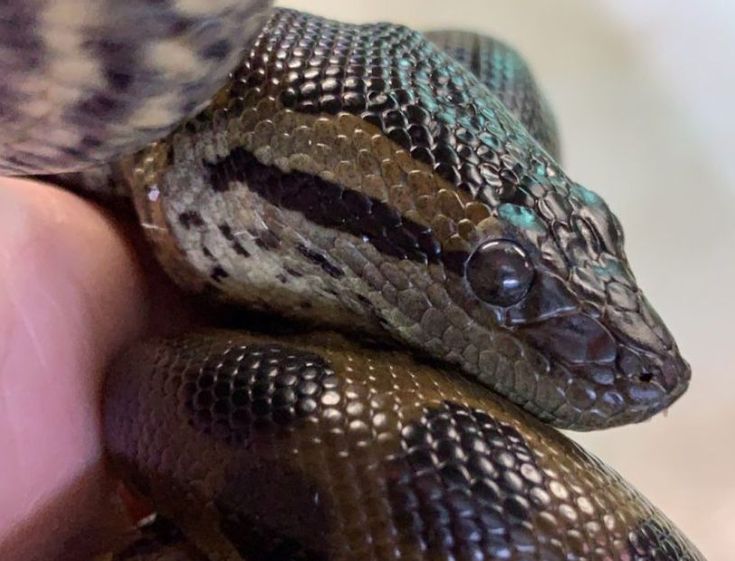 He also takes care of the fry until they grow up and spread out in different directions.
He also takes care of the fry until they grow up and spread out in different directions.
Other inhabitants of the water spaces, male seahorses, play the role of a father even more exemplarily. They have a special cavity on their belly, in which the female lays about fifty eggs. The male fertilizes them and carries them in a bag until the fry hatch from the eggs. The embryos in the pouch are fed with a special nutrient liquid. Newborn seahorse fry leave their parent's pouch and immediately swim out to sea.
Under the protection of the whole family
Some mammals form herds and family clans. Cubs who grow up in such groups acquire useful skills and learn different types of behavior faster than those raised only by their mother.
African female elephants give birth to cubs every four years. Elephants feed on mother's milk for more than two years and live with their mother for about 12 years. The elephant can see several cubs of different ages. The elephant, which has come to the defense of her offspring, is very aggressive, she attacks the enemy, hitting him not only with tusks, but also with her trunk.
Those species of monkeys that live in herds have a "crèche" in which females take care of cubs together. Females who take care of other people's children are also called "aunts" by zoologists. In addition, it is known that most of the cubs in the herd of monkeys have a common father.
Meerkat cubs survive in the difficult conditions of the Kalahari Desert thanks to the well-established lifestyle of an extended family. While some animals from the colony are on guard, others are engaged in raising offspring.
Encounter with the enemy
Birds nesting in colonies have a high percentage of offspring survival because enemies do not dare to attack a large flock. Seagulls are quite capable of coping with large predators and even humans.
Collared peccaries live in large herds of single families. The peccary family usually consists of one male and three females with cubs. When an enemy, such as a jaguar, approaches, the males distract him, and the rest of the family takes to their heels.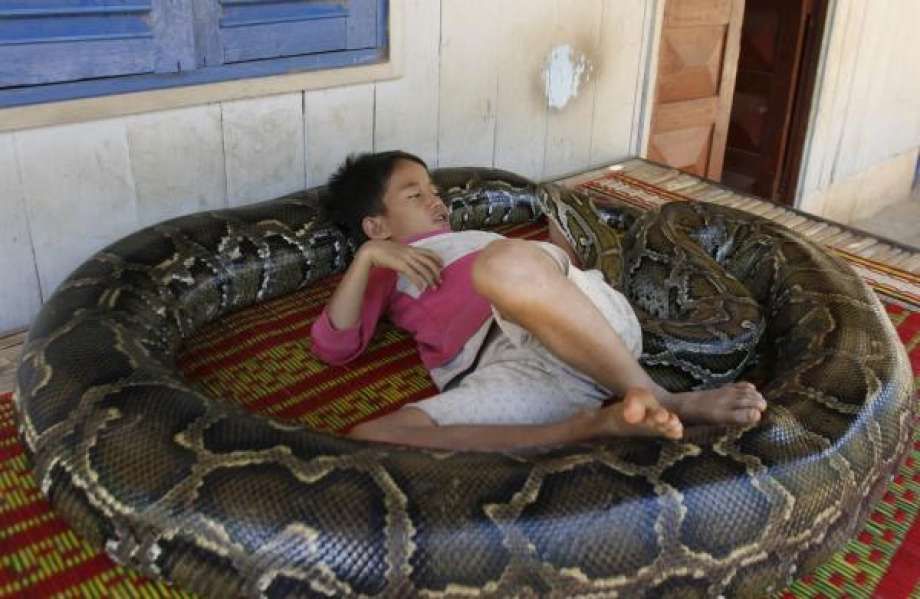
When cheetahs feel that their cubs are in danger, they carry them, one by one, to safety, holding tightly but gently by the scruff of the neck. The cubs do not resist and patiently endure such a "move". The female hamster carries her cubs in her cheek pouches or in an enlarged gap between her teeth.
Many birds try to distract the enemy from the nest by pretending to be injured. They sacrifice themselves for the sake of the chicks. A pair of shorebirds takes turns guarding near the nest - both father and mother pretend to be wounded.
Zoology: Caring for offspring. Video (00:02:41)
Zoology: Suriname Pipa - care for offspring. Video (00:01:01)
Caring for offspring. Fish.AVI. Video (00:00:38)
A cheetah's care for its offspring. Video (00:01:54)
The self-sacrifice and care of animals contradicts the postulates of the theory of evolution.
Konstantin Mikhailov "Dinosaurs in nests: eggs, clutches and caring for dinosaur offspring".
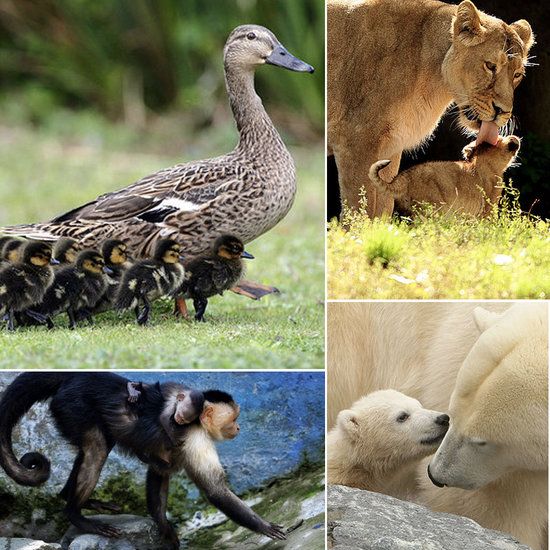 Video (01:05:14)
Video (01:05:14) Caring for offspring. Video (00:25:57)
Biological lecture hall of the Maly Mekhmat of Moscow State University.
Andrey Nikolaevich Kvashenko, teacher of biology, gymnasium 1543, Moscow.
Caring for offspring. Birds.AVI. Video (00:00:50)
Caring for offspring is a basic instinct. Video (00:01:23)
Caring for offspring is the basic instinct of most representatives of the fauna. Some of them (swans, geese, certain types of primates) are monogamous and keep a couple for life, but even with polygamy, when, for example, a lion or an elephant creates a harem around them, the relationship between individuals sometimes touchingly resembles human ones.
True, analogues of a “complete” family are rarely found in nature: after the appearance of offspring, the male, as a rule, cools off towards his companion and she herself has to be responsible for the safety of the cubs. It is she who provides food for them, ensures their safety and prepares them for adulthood.
The period of maternal care varies depending on the species. For example, rodents leave their cubs after a couple of months, and young tigers live with their mother for two or three years - until she is ready to bring new offspring.
From the Uncyclopedia
In order for a species to continue to exist, each generation must leave behind offspring capable of reproduction. Most invertebrates and fish do not care for their offspring. They simply lay thousands of eggs, only a part of them hatch into young, and an even smaller number grow and multiply. A more reliable way to continue the race is to provide them with food, protection from predators, and even teach some skills after the birth of a limited number of cubs. Caring for offspring is shown in various forms by many animals. Most of them are endowed with special parental instincts, but in highly organized animals, individually acquired experience is also important.
In its simplest form, care for offspring is present in all organisms and is expressed in the fact that reproduction occurs only under conditions favorable for offspring - in the presence of food, a suitable temperature, etc.
Care for offspring in many animals begins with preparing for his birth. Often the seasonal migrations of animals are associated with moving to breeding areas, sometimes many thousands of kilometers away from their habitats. Animals that do not make such long journeys also choose their nesting territory in advance, and many of them carefully guard it and prepare shelters - nests, burrows, dens adapted for future offspring.
Many parental concerns are related to the feeding of offspring.
Most insects take care of their young easily. It is enough for the female to lay her eggs in a place where her larvae would find suitable food, for example, cabbage white butterfly larvae - cabbage. But some insects specially prepare shelter and food for their offspring, for example, honey-gatherers - wasps and bees. And the hunter wasps supply their larvae with crickets and grasshoppers. Before laying an egg, the Sphex wasp injects poison into the nerve ganglions of its prey, so that it remains motionless, but alive and serves as a fresh food supply for the larva for the entire period of its development. In dung beetles, not only females, but also males participate in the preparation of food for offspring - dung balls.
In dung beetles, not only females, but also males participate in the preparation of food for offspring - dung balls.
In many birds, the chicks hatch completely helpless and need frequent and regular feeding, some insectivorous birds feed their offspring up to 200 times a day! Sometimes parents (jays, nutcrackers, etc.) store food for future chicks from autumn. The offspring of brood birds - chickens, ducks, geese, etc. - are born independent, able to swim, walk, peck. Parents can only lead them to food, water, protect them from enemies, warm them (see Imprinting).
Female mammals feed their young with milk until they are able to eat other foods. In some animals, this period lasts several weeks, in others it is longer, and in great apes it is several years. Gradually, parents begin to accustom children to adult food - they show edible plants, teach them to hunt.
Many animals protect offspring from enemies. In birds, colonial nesting serves this purpose, but solitary nesting birds can also unite to drive predators away from their nests. For example, if a cat or even a person tries to climb a tree where there is a crow's nest, 10-15 birds flock to it, screaming at the disturber of the peace.
For example, if a cat or even a person tries to climb a tree where there is a crow's nest, 10-15 birds flock to it, screaming at the disturber of the peace.
Most mammals are more excitable than usual during the rearing period. Many large wild mammals attack people precisely when they threaten the cubs or are close to them. The moose does not allow anyone to the cub, including other moose.
In many mammals and birds, cubs stay with their parents for a long time, acquiring skills necessary for life by imitation. This is the period of raising offspring. Parents teach cubs to choose and find food, water and even medicinal plants, as well as shelters for sleeping or in case of bad weather. These forms of parental care are especially developed in mammals with a long lifespan. In elephants and some great apes, adolescence lasts up to 8-10 years. Not only parents, but also almost all adult members of the group take part in the upbringing of their offspring. Older brothers, and especially sisters or just females who do not currently have their own offspring, watch the cub, help feed it, care for it, play with it. In the event of the death of the mother, they, as a rule, adopt the orphaned cub. Such a collective form of care for offspring greatly increases the chances of its survival.
In the event of the death of the mother, they, as a rule, adopt the orphaned cub. Such a collective form of care for offspring greatly increases the chances of its survival.
The highest development of care for offspring is in humans. He not only takes care of the life support of children, but also educates them, transfers to them his life experience and knowledge accumulated in history.
- 641.50 Kb
2731-210307774598-27752731- 21030774598-2775
How animals take care of
,On their offspring
Maxim Kozak 3 “G” Class
How animals take care of their offspring
The success of the Russian Federation’s survival depends on adequate parental behavior. Caring for offspring many animals begin with preparation to his birth. Often seasonal animal migrations are associated with movement to breeding grounds, sometimes over many thousands of kilometers from their habitat. Animals that do not make such far travel, also choose their own nesting territory, and many of them carefully guard it and prepare shelters - nests, burrows, lairs, adapted for future offspring.
1. Caring for offspring in bears.
Females produce offspring every three of the year. Pregnant women in October or November bears leave the sea ice and head to the nearest land in search of a place to lairs where they raise their offspring during the long polar night. Reaching sushi, the bear is looking for the right one for a long time place until it selects a depression or cave in a snowdrift of old snow. Gradually blizzards cover the lair and leave traces, revealing her whereabouts. In a few months inside the snow den appear tiny cubs no bigger than rats. Newborn bears burrowing into the mother's fur, immediately look for the nipples and start suck. The claws of the baby bear are curved and sharp - it helps him to hold onto soft fur on the belly of a bear.
Meanwhile, the female is starving and her weight drops almost twice. But will go she will be able to hunt only when her children grow up and gain strength. Bear cubs need time to get used to the arctic temperature after several months of living in a warm from the mother's body to the lair. After 2-3 months, the weight of the cubs increases by 4-5 times, and the family starts to make short walks in the immediate vicinity from dwelling. Bear introduces cubs with a new environment for them, teaches hunting skills and shows amazing patience for frisky games and curiosity cubs. Bear cares for cubs do not stop until they will become independent.
After 2-3 months, the weight of the cubs increases by 4-5 times, and the family starts to make short walks in the immediate vicinity from dwelling. Bear introduces cubs with a new environment for them, teaches hunting skills and shows amazing patience for frisky games and curiosity cubs. Bear cares for cubs do not stop until they will become independent.
Fathers, as is often the case in nature, take no part in fate offspring, shifting all worries about food bear cubs on the shoulders of the she-bear. However, food is not the only problem standing in front of a female with cubs. real the threat comes from adult males who compete for possession female. If the chance presents itself, great the male can easily kill her cubs. Then the female will go into heat again, and he will be able to mate with her to ensure that the next generation will inherit it genes. Therefore, females are very vigilant and do not let the cubs go far from themselves.
2. Care about the offspring of monkeys.
continued genus is the most important aspect of an animal's life. Some animal care for offspring takes only a short time after birth. However, monkeys have children completely defenseless, and they need fairly long maintenance. This period can last for months, and often years. Even after the young ones are able take care of themselves, they stay close contact with your mother. Within two to ten years, depending on the species, young primates are not only protected mother, but also take a course of study from her.
Early as a child, little monkeys eat mother's milk and gradually, during several months, switch to normal for your kind of food. Mother is for the cub is not only a nurse, but also a protector. Caring for offspring comes to an end when cubs reach sexual maturity but it can happen earlier if mother will have another baby.
3. Caring for offspring at foxes.
Front the appearance of offspring, a married couple cleans burrow and the female spends most of the time in her. Male only in the first days after birth foxes when the female does not come out at all burrows, brings her food, and then returns to single life. All care for offspring lies on the female: she skillfully extracts food, and protects the cubs selflessly. A mother fox barks at a person because of bushes, trying to divert his attention from the hole, and the dog is trying to take away
Male only in the first days after birth foxes when the female does not come out at all burrows, brings her food, and then returns to single life. All care for offspring lies on the female: she skillfully extracts food, and protects the cubs selflessly. A mother fox barks at a person because of bushes, trying to divert his attention from the hole, and the dog is trying to take away
4. Taking care of offspring of lions.
If the lioness becomes pregnant, then after 3.5 months, shortly before giving birth, she again leaves the pride. She is finds a shady, inconspicuous place and there offspring are born - from 1 to 6, on average, three cubs. Behind them is the first time caring mother, and after returning in the pride all lionesses are equally affectionate with cubs and make no distinction between their own and others. Lion cubs are born in the pride synchronously, which gives them an advantage: it is known that mutual feeding and collective defense significantly reduce mortality cubs. The role of a lion in caring for offspring consists mainly in the protection of the pride from stray male lions. He can also make sure that when dividing the booty the cubs got their portion. But from predators cubs are guarded by females.
The role of a lion in caring for offspring consists mainly in the protection of the pride from stray male lions. He can also make sure that when dividing the booty the cubs got their portion. But from predators cubs are guarded by females.
5. Caring for offspring at the hippos.
The appearance of a new life is always amazing and wonderful! Watching how caring and gentle the newly appeared Mommy, how cute are the clumsy and
beautiful newborn babies animals, it is interesting to know how the pregnancy and childbirth occur in hippos.
Pregnancy lasts 8 months (227-240 days according to various data). Feeling the approach of childbirth, the female walks away from the herd to a secluded place. giving birth, in most cases, under water, less often on the land. If childbirth on land is inevitable, then expectant mother cooks from the surrounding bushes something that looks like nests. For this she tramples bushes and grass. Newborn the baby weighs 25-50 kg, most often born 40 kg crumbs. Its length is about meters, shoulders 50 cm wide. If the little one is born under water, then the female pushes his muzzle to the surface so that he does not suffocated, as it can delay breathing only for 40 seconds. Newborn the hippo is already standing on its own legs, 5 minutes after birth.
Its length is about meters, shoulders 50 cm wide. If the little one is born under water, then the female pushes his muzzle to the surface so that he does not suffocated, as it can delay breathing only for 40 seconds. Newborn the hippo is already standing on its own legs, 5 minutes after birth.
First days 10 mother is with your child, practically nothing doesn't eat. She is ready and able to win even a tiger, if he shows even the slightest a threat to her beloved cub. Only when he will be strong enough to go ashore, mother moves away a little newborn. Feeding usually takes place within 4-18 months. And surprisingly the baby can suck milk both on land and in the water, tightly pressing the nostrils and ears to the body.
In the water, the female helps the baby to swim, gently pushing him with her muzzle. When the baby gets tired, she takes it to herself on the back (on the scruff of the neck) and carries on itself. In the herd, mom pushes everyone away from the baby adult males, so that in a crush they did not press.
Found in the animal kingdom a variety of forms of care for offspring: from complete absence to the most complex and long-term relationships between children and parents. At its simplest, care about offspring is present in all organisms and is expressed in the fact that reproduction occurs only under favorable conditions for offspring, - in the presence of food suitable temperature, etc.
Internet.
Sites: Caring for offspring, Caring about the offspring of lions, Caring about the offspring of hippos, Care about the offspring of monkeys, the meaning of care about offspring, Photo of animals with cubs.
Description of work
Successful survival of the offspring to a large extent depends on the adequacy of the behavior of the parents. Caring for offspring in many animals begins with preparation for its birth. Often, seasonal migrations of animals are associated with moving to breeding areas, sometimes many thousands of kilometers from their habitat. Animals that do not make such long journeys also choose their nesting territory in advance, and many of them carefully guard it and prepare shelters - nests, burrows, dens adapted for future offspring.
Animals that do not make such long journeys also choose their nesting territory in advance, and many of them carefully guard it and prepare shelters - nests, burrows, dens adapted for future offspring.
Pictures of baby animals are the cutest thing imaginable. But what could be more charming than photographs showing the tender love of parents for their offspring?
25. Flamingo mother feeding her chick
Both mother and father flamingos regurgitate food for their chicks, both of them are able to produce special milk that provides the young with all the necessary substances.
24. A family of tiny pigs
Despite their reputation as dirty animals, pigs are quite clean. If they live in a large enough area, then they will definitely take care not to stain the places where they eat and sleep.
23. A baby gorilla sleeps in its mother's arms
A mother gorilla will take care of her cub for 2.5 years, although little monkeys are able to move by themselves as early as 8 months of age.
22. A baby dolphin clung to its mother
Dolphins are highly intelligent marine mammals with highly developed social skills. These altruistic animals often come to the aid of even humans.
21. Tree climbing lesson from bears
Female brown bears are able to give birth even during hibernation. Usually cubs are born hairless, toothless and blind.
20. A little chameleon sits on his father's horns
Chameleons have unique eyes - each one acts independently of the other. In addition, they are able to see even in the ultraviolet range.
19. Seal cub with mother
Seals spend a lot of time in the water, but they give birth and raise their young on land.
18. A baby koala sits on its mother's back
Koala cubs live in their mother's pouch for six months and then spend another six months on their backs.
17. Little penguin with parents
Penguins are highly social birds that form colonies of tens to thousands of birds where they breed their chicks.
16. Golden retriever with puppies
Retrievers need a lot of attention or they will mope. These are very social dogs and they just need to communicate with people and other dogs.
15. A baby alligator sits on its mother's head
Depending on the ambient temperature, alligator eggs hatch either male or female. In a warm environment, males are obtained, while in a cold environment, females.
14. Squirrel with a baby
Squirrels molt twice a year, once after winter and once at the end of summer.
13. A polar bear cub climbs its mother
Despite their cute appearance, polar bears are the largest predators on land. Males can reach a weight of 680 kilograms.
12. Baby opossums on their mother's back
Baby opossums are born tiny, the size of bees, and then grow in their mother's pouch for a while before they are born.
11. Tigress with cub
Tiger cubs leave their mother at the age of two.
10. Baby rhinoceros and his mother
Rhinos have a gestation period of 15-16 months, they are the second longest gestation after elephants, which carry their calves up to two years.
9. Female swan and her chick
Adult swans are capable of flying at speeds of 100 km/h, but they always try to stay close to the young.
8. Elephant clings to its mother's tail
Elephants, along with humans, monkeys, magpies and dolphins, are able to distinguish their reflection in the mirror.
7. A hippo cub snuggled up to its parents
Although hippopotamuses look quite fat, they can easily outrun a human. It's hard to believe, but they are considered one of the deadliest animals in Africa.
6. Duck swimming lesson
A duck can take its brood up to half a mile before finding a suitable feeding and swimming pool.
5. Giraffe family
Female giraffes give birth standing up.


